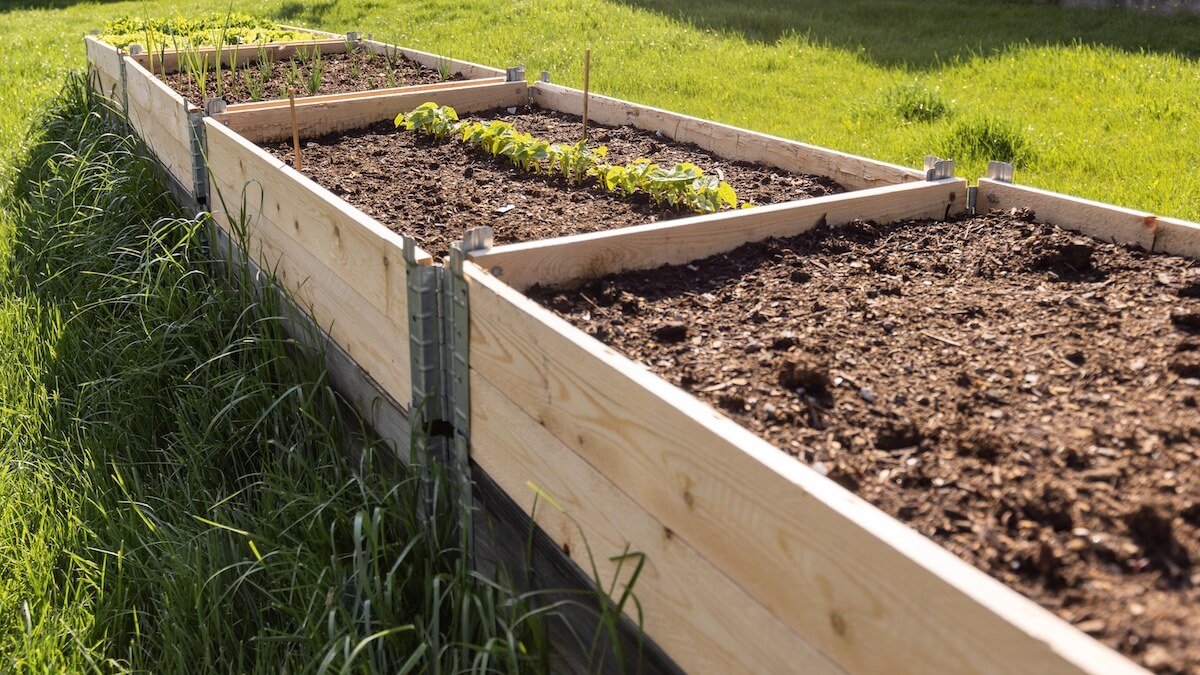Soil Volume Calculator for Raised Beds
How much Soil or Compost do you need for your Raised Beds?
Planning a new raised bed and unsure how much soil you’ll need? Our Soil Volume Calculator takes out the guesswork. Whether building one bed or several, knowing the right amount of soil helps save time, money, and effort. Enter your raised bed’s length, width, and depth; the calculator does the rest. You’ll get results in cubic feet, cubic yards, and litres. It’s fast, accurate, and easy to use—ideal for gardeners at any level. No more overbuying or running short. Start your raised bed project confidently and get your garden growing smartly.
Soil Volume Calculator

Raised Garden Beds: The Smart Choice for Growing Success
Raised garden beds are a brilliant solution for gardeners looking to take control of their growing space. Whether new to gardening or have years of experience, raised beds offer a simple yet effective way to grow healthier plants and improve your harvests.
Imagine stepping into your garden on a crisp morning. The soil is warm, the beds are neat, and your vegetables are thriving. Raised beds help make that image a reality. They offer better drainage, easier access, and greater control over your soil. It’s no surprise that more gardeners are using this method to grow flowers, herbs, and vegetables.
Why Raised Beds Work So Well
When you garden in raised beds, you create a controlled environment for your plants. You can choose exactly what soil to use, ensuring the right texture, structure, and nutrient levels. This is especially useful if your garden has poor or compacted soil or is prone to waterlogging.
Raised beds also warm up faster in spring, giving your plants a head start. That early boost means stronger roots and better crops. Because the soil isn’t walked on, it stays loose and well-aerated—just what roots love.
Raised beds can be built from various materials, including timber, brick, and recycled sleepers. They look tidy, help define your garden space, and can even reduce strain on your back and knees. If you enjoy working outdoors but hate bending over, a well-built raised bed is a game changer.
Designed for Practical Gardeners
There’s a reason so many gardeners choose raised beds year after year. They help keep your garden organised and manageable. You can easily plan what to plant and where. Crop rotation becomes simpler, and applying feeds where you need them is easier.
Our soil volume calculator makes this process even more efficient—no more guesswork or rough estimates—just accurate measurements that help you get the job done. Whether filling one bed or a dozen, knowing how much soil you need saves time and cuts waste.
Perfect for All Spaces
Raised beds aren’t just for extensive gardens. They’re ideal for small spaces too. Using compact or tiered raised beds, you can create a productive garden in a courtyard, on a patio, or even on a balcony.
You don’t need acres of land. You just need a sunny spot and the proper setup. Many people use raised beds to grow fresh produce at home, even in cooler parts of the UK. Adequate drainage and good-quality soil allow your beds to thrive in all areas.
Get Your Hands Dirty—and Love It
There’s something deeply satisfying about digging into a raised bed. The soil feels rich and loose beneath your fingers. The scent of earth rises as you plant your seeds. And as the weeks pass, you’ll see green shoots turn into complete, thriving plants.
Raised beds give you the confidence to try new things. Want to grow carrots, leeks, lettuce, or tomatoes? Raised beds make it easier to control soil depth, temperature, and moisture—all key to strong yields.
And it’s not just vegetables. Herbs and cut flowers grow beautifully in raised beds, especially when you can fine-tune the growing conditions.
Things to Keep in Mind
While raised beds are practical and productive, they do need some planning. Be sure to:
Choose a sunny, level spot
Build with durable materials that suit your garden’s style
Allow for paths between beds so you can reach everything comfortably
Use high-quality, well-draining soil with plenty of organic matter
Depth is necessary, too. For most crops, 30–45cm (12–18 inches) is ideal. Deeper beds may be needed for root vegetables like parsnips or potatoes.
This is where our Soil Volume Calculator comes in handy. It helps you determine the soil for each bed based on its length, width, and depth. You’ll get your totals in cubic metres, litres, and cubic feet—so you can order the right amount, with no waste.
A Great Investment for Years to Come
Once you’ve built your raised beds and filled them with good soil, you’ll be amazed at how much you can grow. Year after year, these beds will keep delivering. Refresh the top few centimetres of soil each season, and you’ll keep your garden productive and healthy.
Raised beds are a wise, long-lasting choice if you plan your garden now. They look great, perform well, and make gardening more enjoyable. Pair them with our soil volume calculator; you’ve got everything you need to build your best garden.
Get growing—and let your raised beds do the heavy lifting.
